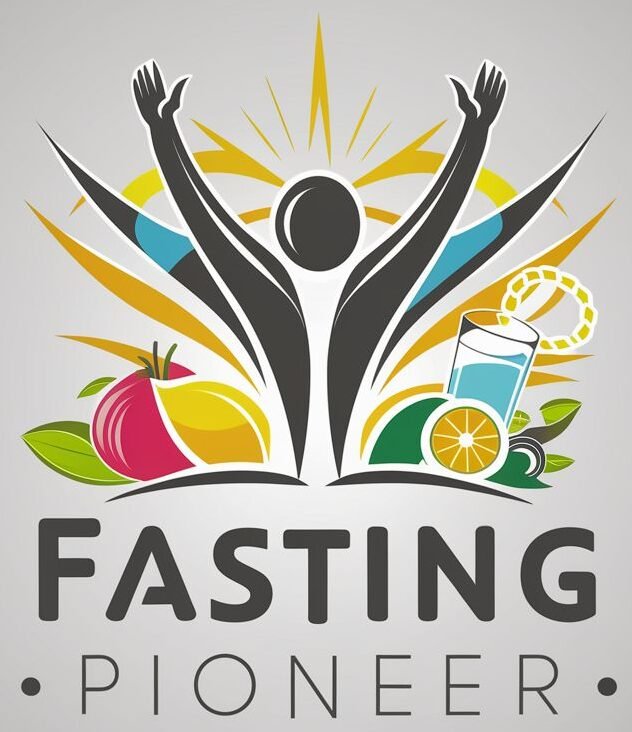So, you’ve heard about fasting and you’re curious to know more, huh? Well, you’re in the right place. In this article, we’ll explore the various fasting methods that have gained popularity in recent years. From intermittent fasting to the 5:2 diet, we’ll break down each method and provide you with a clear understanding of what it entails. Whether you’re looking to lose weight, improve your overall health, or simply experiment with a new eating pattern, this comprehensive guide will help you navigate the world of fasting with confidence. So, let’s get started and discover the fasting method that suits you best.

1. Intermittent Fasting
Intermittent fasting (IF) is a popular eating pattern that involves cycling between periods of fasting and eating. There are several different methods of intermittent fasting, each with its own unique approach and benefits. Let’s explore some of the most popular ones:
1.1 16/8 Method
The 16/8 method of intermittent fasting involves fasting for 16 hours and restricting your eating window to 8 hours each day. This method is often referred to as the “time-restricted eating” as it focuses on the timing of meals rather than specific food choices. For example, you might choose to eat from 12 pm to 8 pm and then fast from 8 pm to 12 pm the next day. This approach is relatively easy to follow and can be incorporated into many lifestyles.
1.2 5:2 Diet
The 5:2 diet is another popular form of intermittent fasting. In this method, you eat normally for five days of the week and restrict your calorie intake to 500-600 calories for the remaining two days. These fasting days are not consecutive, and it is recommended to space them apart throughout the week. Some people find it easier to disperse these low-calorie days, while others prefer to have them back-to-back.
1.3 Eat-Stop-Eat
The eat-stop-eat method involves fasting for 24 hours once or twice a week. This means that you abstain from food from dinner one day until dinner the next day. For example, you might choose to fast from 6 pm on Monday until 6 pm on Tuesday. During the non-fasting days, you can eat normally and enjoy your regular meals. This fasting method allows for more flexibility in terms of food choices but may be more challenging for some individuals because of the extended fasting period.
1.4 Alternate-Day Fasting
As the name suggests, alternate-day fasting involves fasting every other day. On fasting days, you restrict your calorie intake to around 500-600 calories. On non-fasting days, you can eat normally and consume your regular meals. This method allows for more flexibility in terms of the eating window, as some individuals choose to extend their fasting period to 36 hours or more. Alternate-day fasting may not be suitable for everyone, as the extended fasting period can be challenging and may lead to feelings of deprivation.
2. Water Fasting
Water fasting is a more extreme form of fasting that involves consuming only water for a set period of time. While it may sound daunting to abstain from food completely, water fasting has gained popularity due to its potential health benefits.
2.1 Benefits of Water Fasting
Water fasting has been associated with various health benefits, including weight loss, improved insulin sensitivity, and autophagy. During a water fast, your body switches into a state of ketosis, where it uses stored fat for energy. This can result in significant weight loss, especially when combined with regular physical activity. Additionally, water fasting has been shown to improve insulin sensitivity, which can be beneficial for individuals with conditions like prediabetes or type 2 diabetes. Furthermore, water fasting has been linked to the process of autophagy, where damaged cells are broken down and recycled, promoting cellular health and longevity.
2.2 How to do Water Fasting
To embark on a water fast, it’s essential to prepare your body beforehand and ease into the fasting period gradually. Start by reducing your calorie intake and gradually eliminating solid foods a few days before the fast. Once you begin the water fast, make sure to consume an ample amount of water throughout the day to stay hydrated. It’s also important to rest and listen to your body during this time, as the absence of food may cause fatigue or dizziness.
2.3 Potential Risks of Water Fasting
Water fasting can have potential risks and should be approached with caution. Extended periods of fasting may lead to nutrient deficiencies, electrolyte imbalances, and muscle breakdown. It’s crucial to consult with a healthcare professional before starting a water fast, especially if you have underlying medical conditions or are taking medications. Pregnant or breastfeeding individuals should not engage in water fasting, as it may negatively impact the health of both the mother and the child.
3. Juice Fasting
Juice fasting involves the consumption of fruit or vegetable juices while abstaining from solid foods for a certain period. Advocates of juice fasting believe that it allows the body to detoxify and heal.
3.1 What is Juice Fasting
Juice fasting is a type of fasting where you only consume freshly extracted fruit or vegetable juices, while refraining from eating solid foods. The juices are usually made with a combination of fruits and vegetables, providing essential vitamins, minerals, and antioxidants. The idea behind juice fasting is that by not consuming solid foods, your body can detoxify and get a break from the digestive process.
3.2 Benefits of Juice Fasting
Proponents of juice fasting claim that it can improve digestion, boost the immune system, increase energy levels, and help with weight loss. The juices are rich in vitamins, minerals, and antioxidants, which can support overall health and promote healing. This form of fasting can also be an excellent way to increase your intake of fruits and vegetables, which are essential for a balanced diet.
3.3 How to do Juice Fasting
To engage in juice fasting, you can either make your own juices at home using a juicer or purchase pre-made cold-pressed juices from a reputable source. During the fast, it is recommended to consume a variety of juices made from different fruits and vegetables to ensure a diverse nutrient intake. It is important to listen to your body and ensure you are getting enough calories and nutrients throughout the fast. If you experience any adverse effects or discomfort, it may be best to discontinue or modify the fast.
3.4 Potential Risks of Juice Fasting
While juice fasting can offer benefits, there are also potential risks. Since juice fasting excludes solid foods, it may result in a lack of essential nutrients, such as protein and fiber. This can lead to nutrient deficiencies and imbalances. Additionally, fruit juices can be high in natural sugars, which may cause blood sugar spikes and crashes. Individuals with certain medical conditions, such as diabetes or kidney disease, should exercise caution and consult with a healthcare professional before attempting juice fasting.

4. Time-Restricted Eating
Time-restricted eating, also known as TRE, is a form of intermittent fasting that focuses on restricting the daily eating window. This method has gained popularity for its simplicity and flexibility.
4.1 Definition of Time-Restricted Eating
Time-restricted eating involves limiting your food intake to a specific period each day, typically ranging from 8 to 12 hours. During the fasting period, only calorie-free beverages like water, unsweetened tea, or black coffee are allowed. This approach does not restrict the types of food you can eat, but rather focuses on when you eat them.
4.2 Popular Time-Restricted Eating Protocols
The most common time-restricted eating protocol is the 16/8 method, where you fast for 16 hours and restrict your eating window to 8 hours. However, there are variations of this method, such as the 14/10 or 12/12, which may be more suitable for individuals starting out or those with specific needs. It’s important to find a time-restricted eating protocol that aligns with your lifestyle and preferences.
4.3 Benefits of Time-Restricted Eating
Time-restricted eating has been associated with various health benefits. By narrowing the eating window, it can lead to a reduction in calorie intake, which may promote weight loss or weight maintenance. Additionally, time-restricted eating has been shown to improve metabolic health markers, such as blood sugar control and cholesterol levels. It may also have benefits for sleep, digestion, and energy levels.
4.4 Tips for Practicing Time-Restricted Eating
To implement time-restricted eating successfully, start by gradually narrowing your eating window. Begin with a 12-hour fasting period and then gradually increase it as you feel comfortable. It’s essential to prioritize nutrient-dense foods during the eating window and avoid excessive snacking or overeating. Planning meals and snacks in advance can help ensure a balanced intake within the limited time frame. It’s also important to listen to your body and adjust the eating window according to your individual needs and preferences.
5. Alternate-Day Fasting
Alternate-day fasting involves alternating between fasting days and non-fasting days. This method has gained popularity due to its simplicity and potential health benefits.
5.1 Definition of Alternate-Day Fasting
Alternate-day fasting requires abstaining from food every other day. On fasting days, the calorie intake is restricted to around 500-600 calories, while on non-fasting days, you can eat normally. This approach allows for more flexibility in terms of the eating window on non-fasting days.
5.2 How to Practice Alternate-Day Fasting
To practice alternate-day fasting, you can start by selecting the fasting days that work best for you. Some individuals prefer to have fasting days back-to-back, while others find it easier to space them apart. On fasting days, it’s important to focus on nutrient-dense foods that provide essential vitamins and minerals while keeping calorie intake low. On non-fasting days, eat a balanced diet and ensure you are meeting your nutritional needs.
5.3 Benefits of Alternate-Day Fasting
Alternate-day fasting has been associated with improvements in weight loss, insulin sensitivity, and inflammation markers. The fasting days can lead to a calorie deficit, resulting in weight loss over time. Additionally, alternate-day fasting may help improve insulin sensitivity and blood sugar control, which can be beneficial for individuals with insulin resistance or type 2 diabetes. Some studies have also shown a reduction in markers of inflammation, which is linked to various chronic diseases.
5.4 Risks and Considerations
While alternate-day fasting may offer benefits, it may not be suitable for everyone. The extended fasting periods on fasting days can be challenging for some individuals and may lead to feelings of deprivation or difficulty in adhering to the fasting schedule. It’s important to listen to your body and adjust the fasting approach as needed. Not everyone will experience the same effects, and it’s crucial to consult with a healthcare professional before starting any new fasting regimen, especially if you have underlying medical conditions or are taking medications.
6. The Warrior Diet
The Warrior Diet is an eating pattern that involves a daily fast followed by a period of feasting. Inspired by ancient warrior cultures, this method emphasizes a natural and intuitive approach to eating.
6.1 Explanation of the Warrior Diet
The Warrior Diet involves a 20-hour fasting period followed by a 4-hour eating window. During the fasting period, individuals can consume small amounts of raw fruits and vegetables or have low-calorie drinks like herbal tea. The feasting phase occurs in the evening, where a large meal is consumed, usually consisting of protein, healthy fats, and carbohydrates. This approach is based on the idea that our ancestors followed a similar eating pattern, with periods of hunting and gathering, followed by a feast.
6.2 How to Follow the Warrior Diet
To practice the Warrior Diet, start by gradually extending the fasting period and shortening the eating window. Begin with a conservative fasting phase and gradually increase it until you reach the desired 20-hour fast. During the eating period, focus on consuming nutrient-dense foods and ensure you are getting enough calories and macronutrients to support your energy needs. It’s also important to listen to your body’s hunger and fullness cues and adjust your meals accordingly.
6.3 Benefits of the Warrior Diet
Advocates of the Warrior Diet claim that it enhances fat burning, improves energy levels, and promotes mental clarity. The extended fasting period in the Warrior Diet puts the body in a state of ketosis, where it utilizes stored fat for energy. This can result in increased fat burning and weight loss. Additionally, the feasting phase allows individuals to enjoy a satisfying meal, which can help with long-term adherence to the diet. Some individuals have reported increased energy levels and improved mental focus while following the Warrior Diet.
7. OMAD (One Meal a Day)
OMAD, or “One Meal a Day,” is a form of intermittent fasting that involves consuming all your daily calories within a single meal. While it may sound restrictive, OMAD can be an effective and flexible fasting method for some individuals.
7.1 What is OMAD?
OMAD, as the name suggests, involves eating only one meal per day while fasting for the remaining hours. This eating pattern typically consists of a large meal consumed within a 1-hour window. During the fasting period, only calorie-free beverages like water, tea, or coffee are allowed. While it may seem challenging to consume all your daily calories in one sitting, OMAD can be customized to individual needs and preferences.
7.2 How to do OMAD
To practice OMAD successfully, it’s important to plan your single meal mindfully. Prioritize nutrient-dense foods that provide essential vitamins, minerals, and macronutrients. Try to include a balance of protein, healthy fats, and carbohydrates to ensure satiety and meet your nutritional needs. It’s important to listen to your body’s hunger and fullness cues during this meal and stop eating when you feel satisfied. It’s also crucial to stay properly hydrated throughout the fasting period.
7.3 Pros and Cons of OMAD
The OMAD approach to fasting offers both benefits and potential drawbacks. Some people find it easier to adhere to OMAD due to its simplicity and flexibility. It can also simplify meal planning and preparation, as you only need to focus on one meal each day. Many individuals experience weight loss with OMAD due to the calorie deficit created by a single meal. However, OMAD may not be suitable for everyone. Some individuals may find it difficult to consume all their daily calories within a short time frame or may experience hunger or overeating. It’s essential to listen to your body and modify the approach to suit your individual needs.
8. The 24-Hour Fast
The 24-hour fast is a fasting method that involves abstaining from food for a full 24-hour period. While it may seem challenging, the 24-hour fast can provide various health benefits if done correctly.
8.1 Overview of the 24-Hour Fast
The 24-hour fast is a type of intermittent fasting where you refrain from eating any food for a full day. This can be done once or twice a week, depending on individual preferences and goals. The fasting period starts from the last meal of the previous day and continues until the same time the following day. For example, if you finished dinner at 7 pm on Monday, you would fast until 7 pm on Tuesday.
8.2 How to Perform a 24-Hour Fast
To perform a 24-hour fast successfully, it’s important to plan ahead and ensure you are well-prepared. On the day before your fast, consume a balanced meal with adequate calories and nutrients. This will help provide you with energy for the fasting period. Throughout the fast, only consume calorie-free beverages like water, unsweetened tea, or black coffee. It’s crucial to stay hydrated and listen to your body’s hunger and fullness cues.
8.3 Benefits and Challenges of the 24-Hour Fast
The 24-hour fast can offer various benefits, including weight loss, improved insulin sensitivity, and autophagy. By abstaining from food for 24 hours, you create a calorie deficit, which can lead to weight loss over time. Additionally, the extended fasting period can improve insulin sensitivity, which is beneficial for metabolic health. The 24-hour fast is also believed to promote the process of autophagy, where damaged cells are broken down and recycled. However, the 24-hour fast may not be suitable for everyone. Some individuals may experience discomfort or difficulties with prolonged fasting. It’s important to listen to your body and adjust the fasting approach to suit your individual needs.
9. Extended Fasting
Extended fasting refers to fasting for more extended periods, generally beyond 24 hours. While it may seem daunting, extended fasting can provide various health benefits when done under the guidance of a healthcare professional.
9.1 Definition of Extended Fasting
Extended fasting involves abstaining from food for several days or even weeks. The duration of extended fasting can vary among individuals, and it’s crucial to consult with a healthcare professional before attempting an extended fast. During extended fasting, the body enters a state of ketosis, where it utilizes stored fat for energy.
9.2 Different Types of Extended Fasting
Different types of extended fasting include fasting for 48 hours, 72 hours, or beyond. Some individuals may choose to fast for 5 days, 7 days, or even longer. The duration depends on individual goals, health status, and the guidance of a healthcare professional. It’s important to approach extended fasting with caution and ensure you are adequately prepared physically and mentally.
9.3 Benefits and Considerations of Extended Fasting
Extended fasting has been associated with significant weight loss, improved insulin sensitivity, and autophagy. The prolonged absence of food allows the body to utilize stored fat for energy, resulting in weight loss. Extended fasting can also improve insulin sensitivity and help regulate blood sugar levels. Additionally, extended fasting may promote autophagy, where damaged cells are broken down and regenerated. However, extended fasting may not be suitable for everyone. It’s crucial to work with a healthcare professional who can monitor your health and ensure appropriate nutrient intake throughout the fast.
10. Modified Fasting
Modified fasting involves making specific modifications to traditional fasting approaches, such as consuming very low-calorie meals or certain food groups during the fasting period.
10.1 Introduction to Modified Fasting
Modified fasting encompasses various methods that deviate from the traditional methods of fasting. Some individuals choose to consume limited calories during the fasting period, such as a few hundred calories from specific foods. Others may incorporate specific food groups like fats or protein to help maintain energy levels. Modified fasting allows for more flexibility and customization, depending on individual preferences and needs.
10.2 Examples of Modified Fasting
One example of modified fasting is the fat fast, where individuals consume a high-fat and low-carbohydrate diet during the fasting period. The inclusion of fats helps provide sustained energy while still maintaining a metabolic state of fasting. Another example is the protein-sparing modified fast, which involves consuming a low-calorie and high-protein diet during the fasting period. This method allows for muscle maintenance while still benefiting from the effects of fasting.
10.3 Benefits and Drawbacks of Modified Fasting
Modified fasting can offer unique benefits for individuals who may struggle with traditional fasting methods. It allows for more flexibility and customization while still providing some of the benefits of fasting. Modified fasting methods can help with weight loss, improve metabolic health, and promote adherence to a fasting regimen. However, it’s important to be mindful of nutrient intake and consider potential drawbacks. Modified fasting may still result in a calorie deficit, leading to weight loss, but may not provide the same level of cellular regeneration and autophagy as longer fasting periods. It’s crucial to listen to your body and find a modified fasting approach that suits your individual needs and goals.
In conclusion, there are numerous fasting methods available, each with its own unique approach and potential benefits. From intermittent fasting to extended fasting, there is a fasting method for everyone. It’s essential to consider your individual needs, preferences, and health status when choosing a fasting method. Consulting with a healthcare professional or registered dietitian can provide valuable guidance and support throughout your fasting journey. Remember to listen to your body, stay properly hydrated, and nourish yourself with nutrient-dense foods during the eating periods to ensure a balanced and sustainable approach to fasting.








